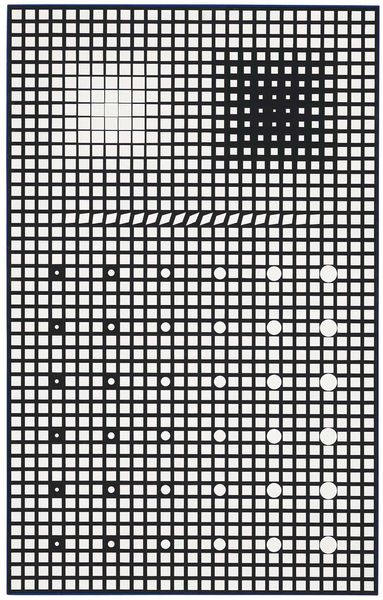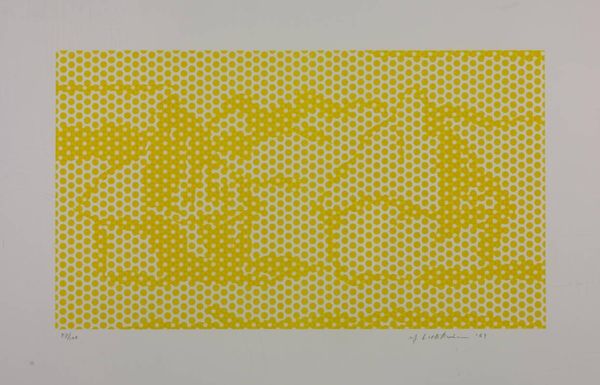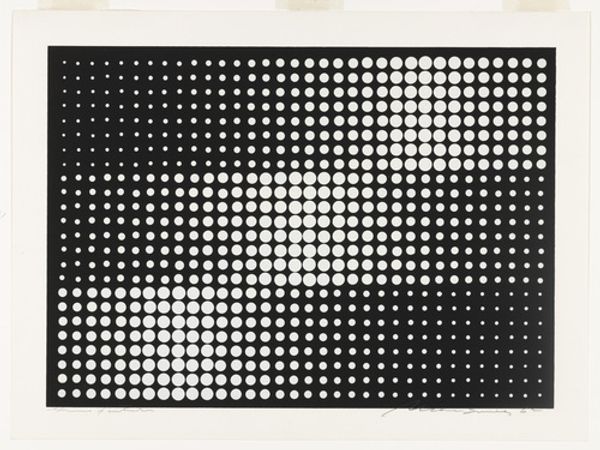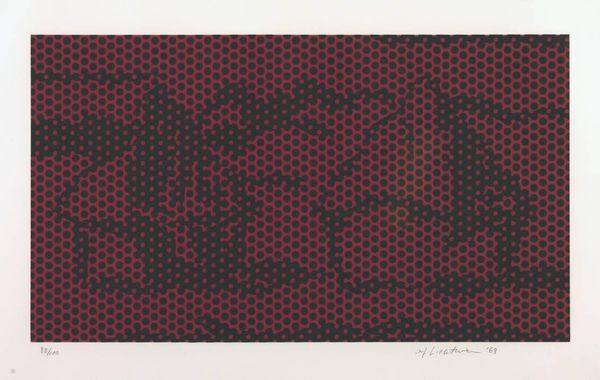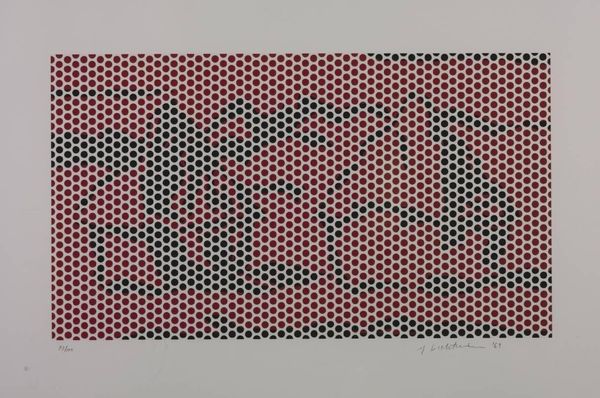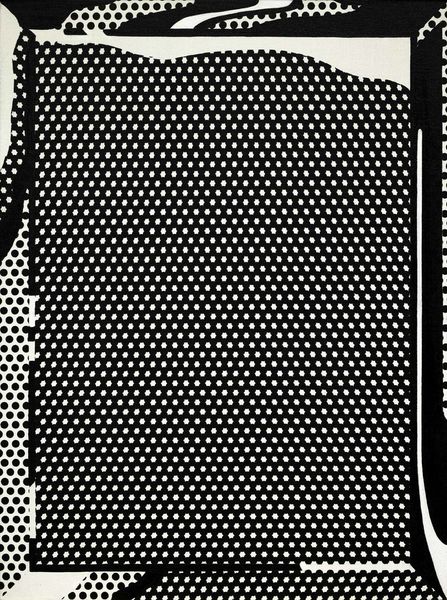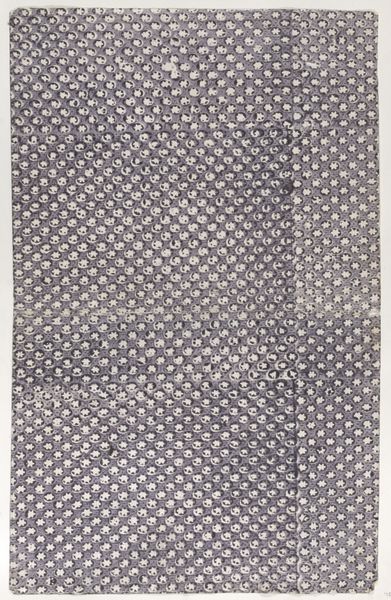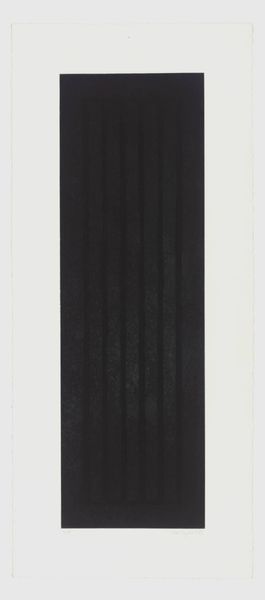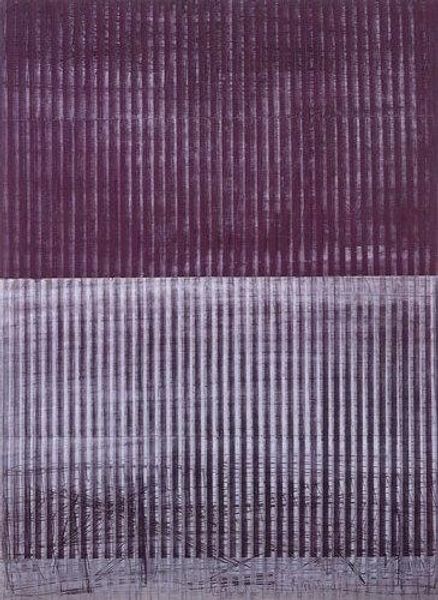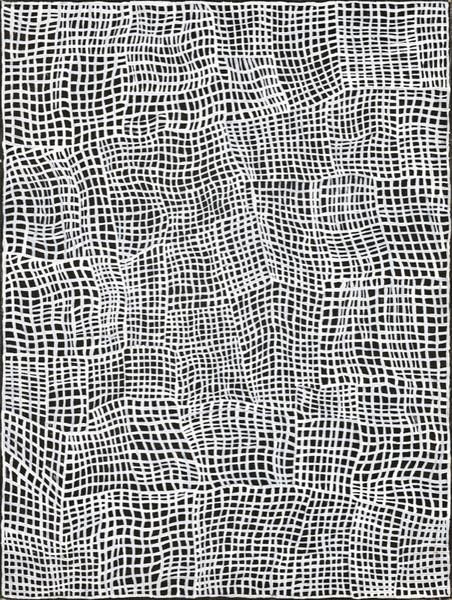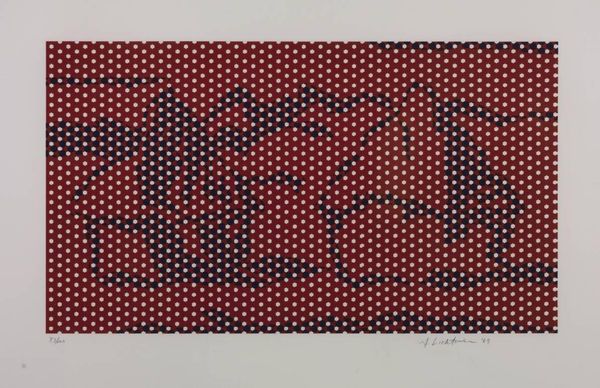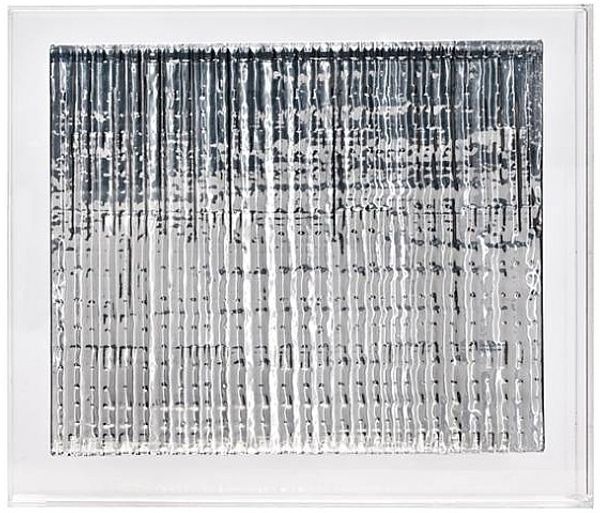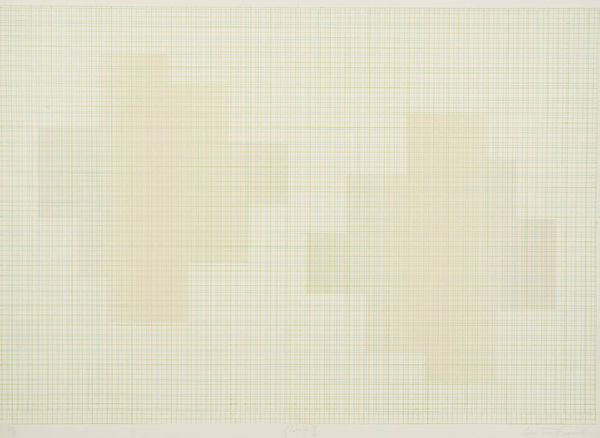
Dimensions: image: 345 x 600 mm
Copyright: © Estate of Roy Lichtenstein | CC-BY-NC-ND 4.0 DEED, Photo: Tate
Editor: This is Roy Lichtenstein's "Haystacks #7," a print from 1969, held at the Tate. The black and white Ben-Day dots create a somewhat pixelated effect. What do you see in this piece, particularly given Lichtenstein's typical engagement with popular culture? Curator: Lichtenstein's choice to depict Monet's Haystacks through the Ben-Day dot process is a commentary on the commodification of art and the blurring lines between high and low culture. How does this seemingly simple image challenge our assumptions about artistic value and accessibility? Editor: So, by reinterpreting a classic Impressionist subject, Lichtenstein critiques the art market itself? Curator: Precisely. He's forcing us to consider how mass production and reproduction impact the aura and perceived worth of art. Think about the social and political upheaval of the late 60s – does this piece reflect a broader questioning of established hierarchies? Editor: That's a really interesting connection. I'll definitely look at Lichtenstein's work differently now. Curator: And I'll consider the impact of commercial techniques on our perception of nature. Thank you.
Comments
tate 8 months ago
⋮
http://www.tate.org.uk/art/artworks/lichtenstein-haystacks-7-p07413
Join the conversation
Join millions of artists and users on Artera today and experience the ultimate creative platform.
tate 8 months ago
⋮
Lichtenstein’s series of prints based is on Claude Monet's series of Haystacks (1891), one of the seminal series of early modern art. In his original Impressionist paintings, Monet depicted a cluster of haystacks across various times of the day to draw attention to the dynamic relationship between colour and light. Similarly, Lichtenstein’s Haystacks run from morning (yellow) to midnight (black) in a mechanical version of Monet's changing light effects. Gallery label, April 2008

